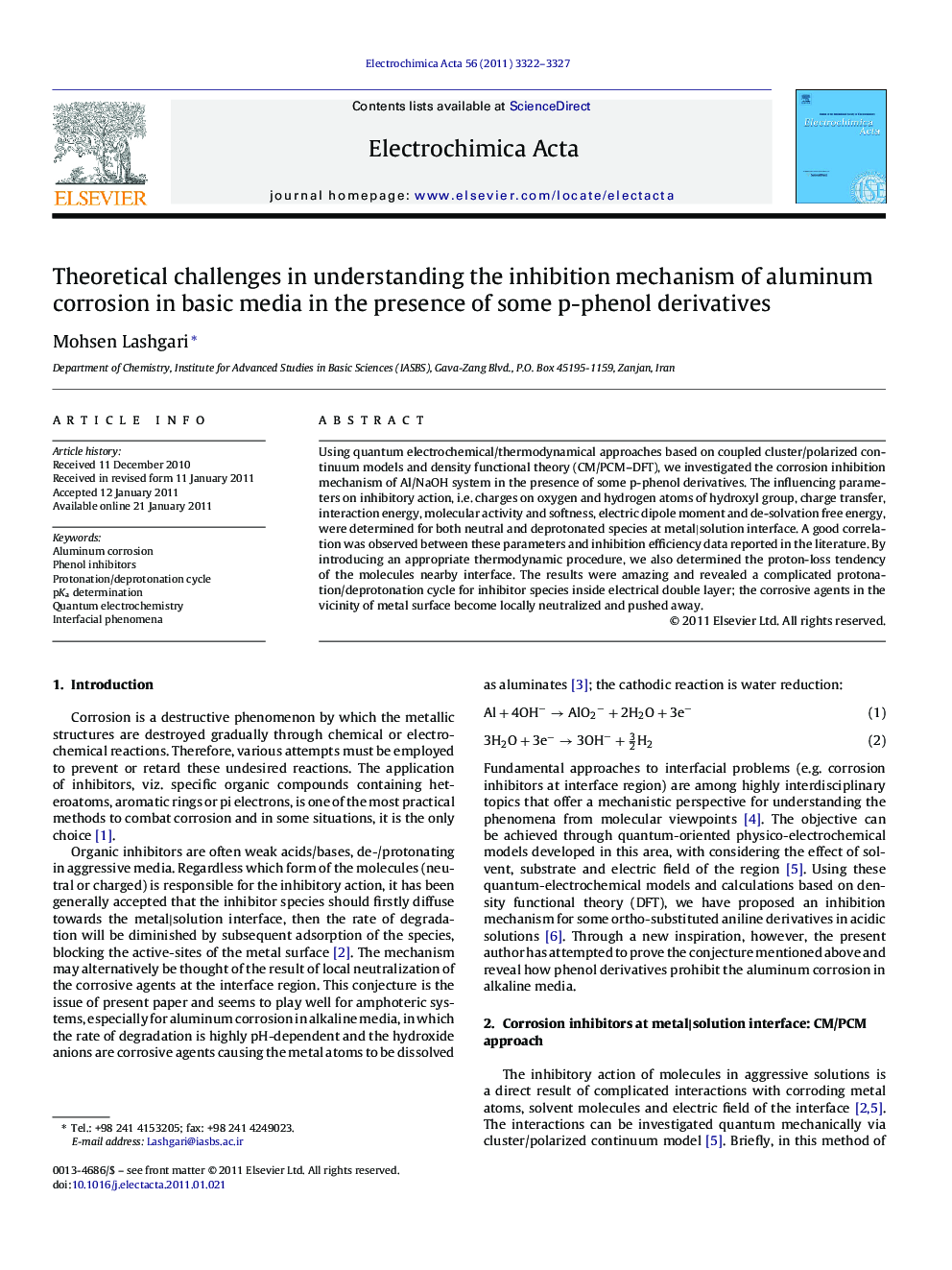| Article ID | Journal | Published Year | Pages | File Type |
|---|---|---|---|---|
| 189835 | Electrochimica Acta | 2011 | 6 Pages |
Using quantum electrochemical/thermodynamical approaches based on coupled cluster/polarized continuum models and density functional theory (CM/PCM–DFT), we investigated the corrosion inhibition mechanism of Al/NaOH system in the presence of some p-phenol derivatives. The influencing parameters on inhibitory action, i.e. charges on oxygen and hydrogen atoms of hydroxyl group, charge transfer, interaction energy, molecular activity and softness, electric dipole moment and de-solvation free energy, were determined for both neutral and deprotonated species at metal|solution interface. A good correlation was observed between these parameters and inhibition efficiency data reported in the literature. By introducing an appropriate thermodynamic procedure, we also determined the proton-loss tendency of the molecules nearby interface. The results were amazing and revealed a complicated protonation/deprotonation cycle for inhibitor species inside electrical double layer; the corrosive agents in the vicinity of metal surface become locally neutralized and pushed away.
Graphical abstractFigure optionsDownload full-size imageDownload as PowerPoint slideResearch highlights► Quantum electrochemical/thermodynamical models for inhibition mechanism. ► A new insight based on local deactivation of corrosive agents at interface region. ► Protonation/deprotonation cycle of phenolic species inside electrical double layer.
